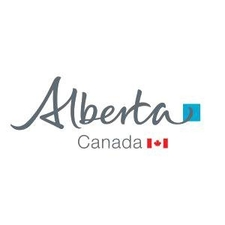ENVIRONMENT
Type of resources
Available actions
Topics
Keywords
Contact for the resource
Provided by
Years
Formats
Representation types
Update frequencies
status
Service types
-
Geospatial resources provided by N-Tech.
-

The Air and Watershed Resource Management Contacts and Boundaries dataset is comprised of all the polygons that represent the Air and Watershed Stewardship districts and the manager to contact with questions or concerns about environmental framework implementation and management response. This dataset was created to lend support to the Regulatory Assurance Division.
-
Web Feature Service provided by N-Tech
-

The Peat Application Area dataset depicts available land which may contain peat resources, and the requirement of a peat application in Alberta. Areas where peat exploration is not allowed due to environmental concerns such as the presence of waterbodies and rivers, trumpeter swan lakes, parks and protected areas, key wildlife and biodiversity areas, caribou zones, and HUC 8 watersheds with bull trout and arctic grayling were removed. This generalized product represents areas where a peat harvesting application can be submitted.
-

This data was produced under contract for Alberta Agriculture and Forestry, Forest Management Branch in 2015-2016. Variables used were elevation, aspect, slope, landscape mesotopography (e.g. ridge, upper slope, etc). Where there was LiDAR coverage, resolution was 1m2 pixels. Canopy height was included in this model as a product generated by LiDAR. In these files there is a report assessing accuracy of the models compared with field observation data. detailed accuracy data by township is available upon request.
-

Please note that this is the v1.0 version of DEP. a new version (v2.0) supercedes this dataset. The Derived Ecosite Phase (DEP) is a digital and spatial representation of ecological sites and phases in those areas of Alberta where both Alberta Vegetation Inventory (AVI) and LiDAR are available. The AVI is an imagery-based digital inventory developed to identify the type, extent and conditions of vegetation, where it exists and what changes are occurring. The most up-to-date ecological site phases can be found in the Plant Community Guides. Guides are broken into individual Natural Subregions. See the Cross Reference Section for additional information. This dataset is produced for the Government of Alberta and is available to the general public. Please consult the Distribution Information of this metadata for the appropriate contact to acquire this dataset.This dataset covers the areas of Alberta where there is both AVI and LiDAR coverage (mainly in the Green Area). AVIE and LiDAR-derived slope position were created by the Forest Resource Analysis Section, Forest Management Branch, Agriculture and Forestry. Rules used to classify the data were developed by the Range Resource Stewardship Section, Land Policy Branch, Environment and Parks.
-

Alberta Environment and Protected Areas developed an Interior habitat indicator for the province of Alberta. The indicator is the percentage area outside of a set distance from human footprint, and can be calculated for the entire province or a specific area where human footprint data are available. This dataset provides values for all Hydrologic Unit Code 8 (HUC 8) watersheds in Alberta for 2010, 2014, 2016 and 2018. The distance at which an area was considered interior habitat was estimated using rounded buffers from the edges of the wall-to-wall Human Footprint Inventories produced by the Alberta Biodiversity Monitoring Institute (ABMI).
-

A mineral restriction is in place to limit and define mineral exploration and development within the Alberta government's mandate to protect natural or historical sites and to manage mineral resources. Examples of mineral restrictions include Bird Sanctuary, Provincial Park, and Coal Mine Licence Area. Restriction types with different levels of surface access are the result of government policy and all are mineral or substance specific.
-

The data represents the density of wetland habitat in the agricultural region of Alberta in 2002. Wetlands are depressional areas that are wet for a long enough period that the plant and animals living in them are adapted to, and often dependent on, living in wet conditions for at least part of their life cycle. In drier areas of the province, wetlands tend to be more intermittent, while in wetter areas, wetlands tend to be more persistent. Topography also affects the occurrence of wetlands. Hummocky landscapes allow for pooling of water in depressions, while landscapes with longer slopes (e.g. the foothills) generally have better defined surface drainage patterns. A wetland in influenced by the interaction between the wet area, the wetland margin and upland area.Wetlands provide important habitat for waterfowl and many other types of wildlife. Wetlands reduce the impact of flooding, provide erosion control, purify water by removing sediment and nutrients, and contribute to groundwater recharge. This resource was created using ArcGIS.
-

This dataset defines the ecological areas of Alberta known as the Natural Regions and Natural Subregions, as defined in 2004/2005. This dataset is intended to allow for the stratification of the province of Alberta based on ecological criteria. Natural Regions are the largest mapped ecological units in Alberta's classification system. They are defined geographically on the basis of landscape patterns, notably vegetation, soils and physiographic features. Natural Subregions are subdivisions of a Natural Region, generally characterized by vegetation, climate, elevation, and latitudinal or physiographic differences within a given Region.The intended scale of use of this product is 1:250 000. This version is 2005 Final. Linework changes from the previous Natural Subregion delineation are due both to better information and refined subregion definitions. Note that the Athabasca Plain subregion has been moved into the Boreal Natural Region and that the Boreal Highlands has now been split into Lower and Upper. There is an accompanying report, published 2006: https://albertaparks.ca/media/2942026/nrsrcomplete_may_06.pdf
 Arctic SDI catalogue
Arctic SDI catalogue